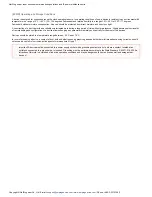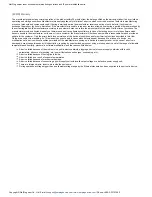
NetPing server room environmental monitoring solutions and IP power distribution units.
Copyright © NetPing east Co., Ltd / E-mail:
/ Phone: +886-2-23121582
[email protected] www.netpingdevice.com
[ENG] 3.2. [DKSF 48.5 IU] Where Can I Change the Settings of the Network Interface
To change network interface parameters, such as an HTTP port, a server and an SNMP agent, there is a need to go to the page «
» of a
Setup
device web interface:
In the section «
» it is possible to configure:
Network Settings
–
IP Address is a field for setting up or changing an IP address of a device.
: 192.168.0.100
On default
–
Netmask is a field for setting up or changing a subnet mask, where the devices are.
: 255.255.255.0
On default
Gateway – is a field for setting up or changing an IP address of a gateway. The value
means a gateway is not specified and packages for
0.0.0.0
other subnetworks will not be sent by a device. On default: 0.0.0.0
–
DNS server is a DNS server address. The value 0.0.0.0 means a DNS server is not specified, and a device will not send DNS requests. On
: 0.0.0.0
default
A DNS module works independently from other firmware modules. A DNS module saves responses from a DNS server into a DNS-cache of a
device. Other firmware modules use this cache to determine an IP address, where a package needs to be sent. A request is not sent directly
before sending a DNS package. If there is no correspondent entry in a DNS-cache in the moment of sending a package, then an outgoing
package is discarded. A DNS cache size coincides with the number of hostnames (IP addresses) specified in the settings of a device.
Domain names are resolved and renewed in the next cases:
Firmware start and restart;
Saving settings through a web interface (if a domain name is changed);
A life timeout of a DNS record, specified in the response from a DNS server
When a lifetime of a cache entry is expired, the entry is not removed from a cache. A device updates an expired entry from time to time. Other
firmware modules use an outdated information until the entry is successfully updated.
If a DNS server does not respond, a device repeats its request three times. Afterwards, it repeats the request periodically nearly once a minute if
there is still no response from a server. The requests are repeated when there is no server response and if there is an error in a server response,
including the error «no such hostname».
–
HTTP Server Port
is a field for configuring a port number, through which an embedded web interface operates. When connecting through a web
browser to a device with a port number different from 80, there is a need to indicate the URL of the following appearance:
x.x.x.x – is an IP address of a device, nn – is a port number, specified in settings of a device.
: 80
On default
SNMP Agent Port – is a field for configuring a UDP port number, which an SNMP agent listens to.
: 161
On default
After setting all necessary parameters, click the button «
».
Apply changes
A device will send any outgoing packages to a gateway address. Therefore, there is a need to specify an IP address of a gateway
properly if there is a need to work with a device from other subnetworks.
A DNS server must use a recursive method. Cyrillic domain names are not supported. Domain names longer than 62 symbols are not
supported either.















































